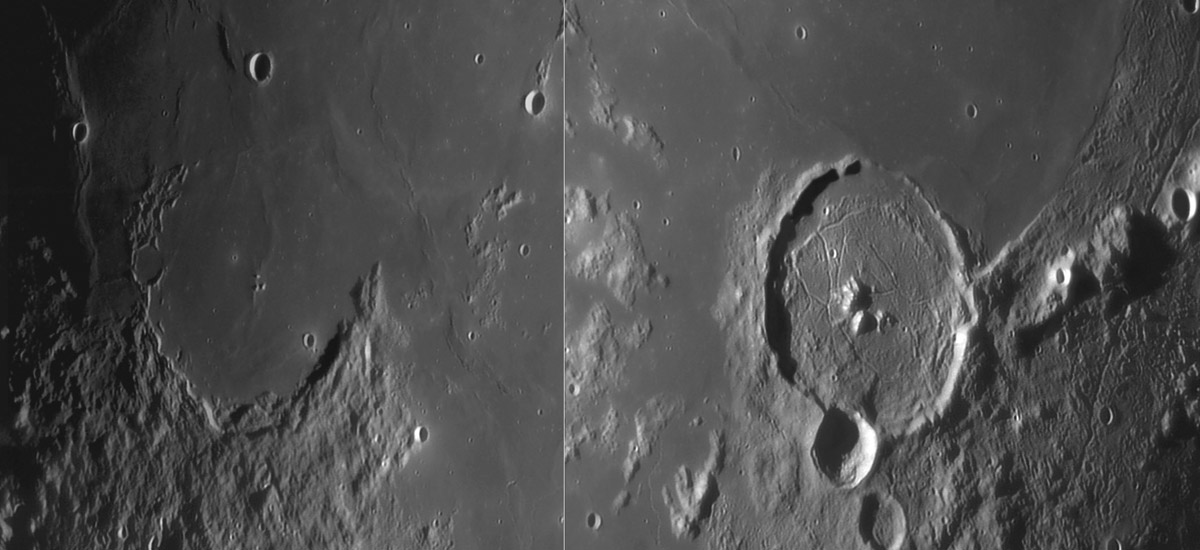
image by Paolo R. Lazzarotti, Massa, Italy
Are these twins, separated at birth? The famous Gassendi (right) and nearby Letronne (left) are nearly the same size (110 and 119 km, respectively) and probably about the same age. Both have been tilted toward a nearby mare, and lavas have entered their floors. But the craters look substantially different. Letronne, like Fracastorius on the south shore of Nectaris, has lost is mare-ward rim and is completely inundated with lava, with only three tiny tops of the central peaks emergent. Gassendi has held the mare at bay, allowing in only a small curved swath just inside its intact southern rim. Gassendi is a floor-fractured crater - its floor is crossed by rilles, and a large curved ridge across the south side hints at possible uplift. I bet Letronne was also floor-fractured crater - most large craters near the edges of maria are - but any evidence to confim that speculation lies buried under the mare lavas. Another crater could have been added next to Letronne. About 100 km to its north is Flamsteed P, a 110 km wide crater almost completely inundated with lavas, with only a few fragments of its rim remaining. And somewhere in the deeper maria there must be other 100 km wide craters completely buried by lavas, without any hints of their former existence.
Technical Details:
1 Dec 2006, 21:34-21:45 UT. Gladio 315 Lazzarotti telescope (f/25), Lumenera Infinity 2-1M camera, Edmund Optics R filter IR blocked, 75 frames stack out of 2000. Both of these images are from a single mosaic; I have trimmed it and rotated the Gassendi part to better compare with Letronne.
Related Links:
Rükl plates 40 & 52
Paolo’s entire image
Lunar Orbiter view
Paolo’s website
Yesterday's LPOD: A Colorful Helmet
Tomorrow's LPOD: Grazing Magnification
COMMENTS?
Register, Log in, and join in the comments.



